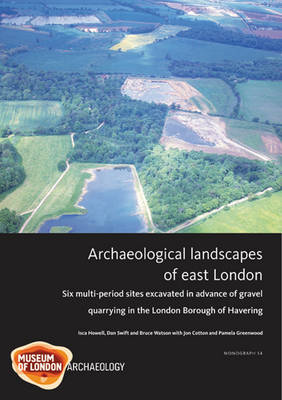MoLAS Monograph
2 primary works
Book 8
London developed as a port and a city because of the Thames estuary, which offers an excellent navigable routeway from the North Sea westwards far into central England. The Romans realised that it was the most convenient place to bridge the estuary, and constructed a series of bridges, which apparently went out of use during the 4th century AD. The Thames was not bridged again until c.1000 AD when the first of a series of timber bridges was erected, initially to prevent Viking raiders sailing upstream. The great stone bridge lined with houses was constructed c1176-1209. Twice in 1281-2 and 1437, parts of the stone bridge were broken by a combination of ice and neglect. It was demolished in 1831-2 after the construction of a new bridge upstream. This volume is based on the 1984 investigation of the Southwark medieval bridge abutment and combines the archaeological, architectural, historical and pictorial evidence for London's greatest bridge. The scene of battles and pageants, London Bridge was also where the 'keep left' on the road rule began in 1722.
Book 54
Archaeological landscapes of east London
by Isca Howell, Dan Swift, Bruce Watson, and Jonathan Cotton
Published 15 April 2011
Six multi-period archaeological sites investigated in advance of gravel extraction in the London Borough of Havering between 1963 and 1997 form the basis of a landscape history of the Rainham and Upminster area. Residual Mesolithic finds from the study area include an adze. The first significant activity locally was an Early Neolithic ring ditch, which remained in use for about a millennium. During the Bronze Age the area was transformed by extensive woodland clearance and the creation of rectilinear fields and scattered farmsteads. The Iron Age saw more intensive landscape utilisation and settlement. About the time of the Roman invasion two farmsteads were fortified. A waterhole from one of these farmsteads revealed a large pottery assemblage dating to c. AD 60-70, showing a low level of Romanisation and few imported wares. A number of farmsteads were continuously occupied throughout the Roman period until after c. AD 370. The presence of Early Saxon activity at some sites suggests either continuity of occupation or only a short period of abandonment. These scattered Saxon farmsteads were probably abandoned during the Late Saxon period, when the rural settlement pattern generally changed to nucleated villages. Significant medieval remains include a farmstead and a manorial enclosure.

